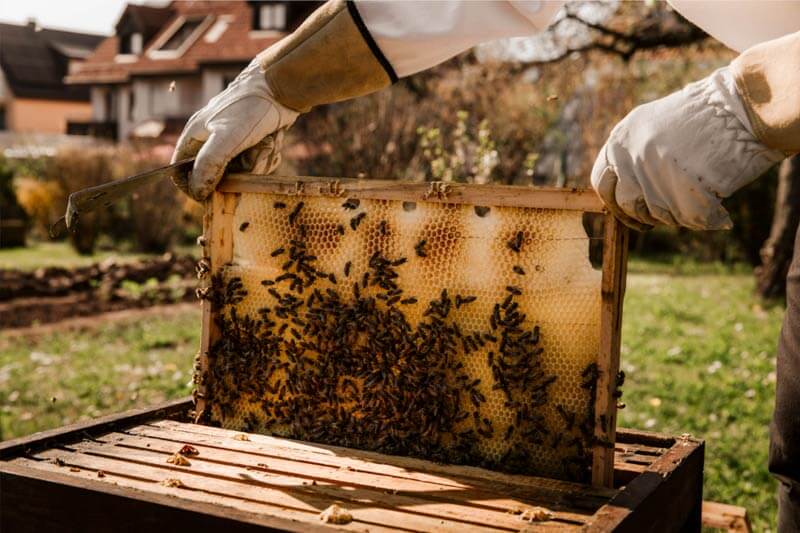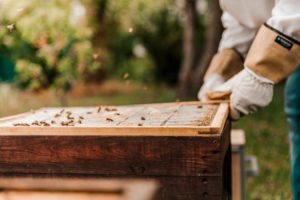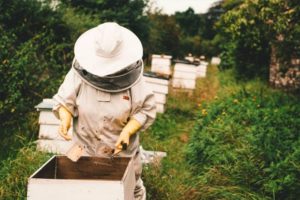It’s safe to say most beekeepers expect to be stung. It’s a small price to pay for a job or hobby that you love! But what if the price isn’t as small as you think? Beekeepers have an increased risk of systemic reaction to bee stings. So, that little sting could quickly turn into anaphylaxis and even be fatal. Read on to learn about the risk of beekeepers being allergic to bee stings.
Antibodies: The Make or Break of Beekeepers Being Allergic to Bee Stings
Ready for a quick science lesson? Understanding antibodies will help you realize why some people react to bee stings, and others do not. There are two major types of antibodies involved in an allergic reaction to bee venom: IgE and IgG.
IgE Antibodies
IgE antibodies recognize foreign substances, like bee venom, as an attack. If you come into contact with a large amount of venom and have many IgE antibodies, you can expect a brutal fight. When your immune system flares this badly, a large reaction is likely looming.
IgG Antibodies
IgG antibodies have the opposite effect and are the most common antibody. They remember the foreign substances you’ve been exposed to previously. Then, binding to the foreign venom proteins, IgG antibodies signal the immune system to attack this one, localized issue. Research shows that frequent bee stings stimulate the immune system to make these protective IgG antibodies. So, many beekeepers do have higher baseline IgG levels9, becoming desensitized on their own.
So how can beekeepers be allergic to bee stings?
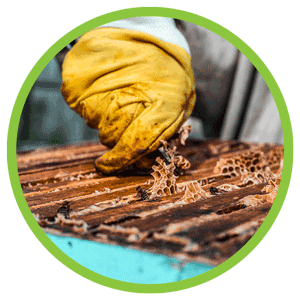
THE HEIGHTENED RISK OF BEE STINGS FOR BEEKEEPERS
Beekeepers are more likely to be allergic because they are more likely to be stung. On average, a beekeeper receives 58 stings annually.8 When starting to work with bees, it is crucial to watch your reaction to bee stings. During this time, beekeepers are accumulating IgG antibodies. Some may already have a fair amount of these protective responders, but some people may quickly find their immune systems responding heavily. You could be a beekeeper allergic to bee stings.
Other factors may still produce an allergic reaction after experiencing many stings, even after developing a relative desensitization level.
Beekeeping increases the risk of systemic allergic reactions 32%.4
Not All Bee Stings Are Alike
If you’ve been a beekeeper for long, you know that not all bee stings are alike. Some factors that may trigger a new or larger allergic response include:
- Number of stings in one episode
- Amount of venom released before removing the stinger
- Location of stings
Also, did you know that springtime bee stings tend to have the most severe reactions?8 It’s true! Even with regular exposure, all it takes is one or two very potent stings to trigger an immune response that can become dangerous.
Contact with Other Bee Products
During the beekeeping process, you may also encounter antigens without being stung, including:
- bee venom
- dust from the beehive containing bee parts and parasites
- propolis (the sticky substance bees collect to make their hives)
These substances can impact a beekeeper’s susceptibility to allergic reactions.
Other Risk Factors
Here are a few additional risk factors of systemic reactions to look out for.8
If you receive fewer than ten bee stings per year, you will be more susceptible to an allergic reaction. Also, watch for symptoms of upper respiratory allergy while working on the hive. These symptoms may be a sign of a worsening response. If you begin developing more severe but non-allergic reactions to bees in springtime, take note. Or, if you start noticing allergies of other types, be aware that your next sting could be different.
TIPS TO REDUCE EXPOSURE
If you begin to notice an increase of risk factors for yourself, take caution. Reduce your exposure to antigens while caring for your bees as much as possible. Here are a few tips to consider.
Wear Protective Gear
Only half of the allergic beekeepers wear fully protective clothing.8 Always wear your coveralls, jacket, and gloves when working with your bees.
Remove Gear Immediately
Remove your protective gear before entering your home. Doing so will ensure you don’t inadvertently expose yourself and other household members to bee venom.
Wash Gear Separately
Do not wash your beekeeping clothes in a household washing machine. Microscopic amounts of venom and other antigens stick to your clothes and don’t disappear in your washing machine. They transfer to anything you wash, which increases your level of exposure.
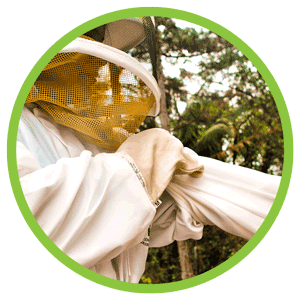
DECREASE YOUR RISK FOR ANAPHYLAXIS
Symptoms following a bee sting are usually mild, with pain and irritation at the site. So, many beekeepers dismiss initial signs of an allergic reaction. Be diligent in noticing your symptoms while beekeeping and have an emergency plan in place.
If you suspect you are a beekeeper allergic to bee stings, talk to a local medical provider. You don’t have to live in fear or stop doing what you love. Instead, you can gradually obtain a helpful balance of IgG and IgE antibodies through venom immunotherapy. This proactive treatment is up to 98% effective in preventing allergic reactions to insect stings.3


